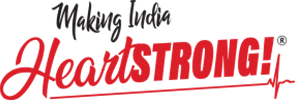


Did you know that although millions of people worldwide may have cholesterol levels far higher than recommended, many may be unaware of their condition?
High cholesterol, often silent and symptomless, seriously increases the long-term risks of developing severe health complications if left unchecked. That’s why experts believe that people must be aware of the extent of damage cholesterol can do if it stays neglected.
This blog post aims to explain the long-term health risks associated with untreated high cholesterol. These include damage to the heart. We’ll explore how cholesterol can undermine our health over time, leading to conditions that affect our vital organs, blood flow, and several other body systems.
Hopefully, this post will arm you with knowledge and strategies to safeguard your health and help you realize that caring for your cholesterol is also a way of caring for your heart.
Among the many dangers of letting cholesterol persist unnoticed and untreated, five fallouts are significant:
Untreated high cholesterol sabotages your body in ways you may not notice until issues become serious. This is about what’s happening inside your blood vessels.
Over time, cholesterol, fats, and other substances accumulate along your artery walls, forming plaque. This process, known as atherosclerosis, narrows the arteries, making it harder for blood to flow through. Such a problem can affect your heart’s supply of oxygen-rich blood. Increased risk of coronary artery disease is among the leading causes of heart attacks. There is also a strong possibility of cholesterol enabling stroke when these plaques affect arteries leading to the brain.
According to Mayo Clinic, “With high cholesterol, you can develop fatty deposits in your blood vessels. Eventually, these deposits grow, making it difficult for enough blood to flow through your arteries. Sometimes, those deposits can break suddenly and form a clot that causes a heart attack or stroke.”
High cholesterol doesn’t just stop at clogging arteries – it also plays a significant role in elevating your blood pressure, too. As cholesterol builds up on the artery walls, these passageways become narrower and lose their elasticity, creating a condition called arteriosclerosis.
The heart must exert more force to pump the same amount of blood as before through these constricted arteries, leading to higher blood pressure or hypertension.
According to Julie Davis, writing in WebMD, “The link between high blood pressure and high cholesterol goes in both directions. When the body can’t clear cholesterol from the bloodstream, that excess cholesterol can deposit along artery walls. When arteries become stiff and narrow from deposits, the heart has to work overtime to pump blood through them. This causes blood pressure to go up and up. Over time, high blood pressure can damage arteries in its own way. It makes tears in artery walls where excess cholesterol can collect.”

Peripheral Arterial Disease (PAD) occurs when cholesterol plaque builds up in the arteries of your legs. This is similar to how it can clog arteries leading to the heart or brain. This buildup narrows the passageways through which blood can flow, particularly affecting the legs.
The primary hallmark of PAD is leg pain and fatigue, especially when walking or exercising, because your muscles aren’t getting the oxygen-rich blood they need. This condition might sound like it is restricted to the legs, but its implications can be far-reaching. Beyond the discomfort of mobility issues, PAD could be a signal for broader cardiovascular health problems. It significantly raises the risk of heart attack and stroke, along with foot skin ulcers.
According to Vascular Surgeon Julie Duke, MD, RPVI, quoted in Health Fairview, University of Minnesota, “If you have atherosclerosis in your legs, it’s almost certainly occurring elsewhere in the body. That’s why all patients with PAD, regardless of whether leg pain is present, are at increased short-term risk of a heart attack or a stroke. In patients with advanced PAD, it can be critical to intervene early to prevent foot ulceration and possible amputation.”
The relationship between high cholesterol and the risk of developing type 2 diabetes is a vicious cycle that demands attention.
What happens when elevated cholesterol levels affect diabetes? They could cause increased insulin resistance. This makes it harder for the body to use insulin effectively. High blood sugar levels can damage blood vessels and nerves that control the heart, escalating the risk of coronary artery disease, heart attack, and stroke.
What happens when diabetes affects cholesterol? According to the American Heart Association (AHA), “Diabetes tends to lower “good” cholesterol levels and raise triglycerides and “bad” cholesterol levels, which increases the risk for heart disease and stroke. This condition is called diabetic dyslipidemia. Diabetic dyslipidemia means your lipid profile is going in the wrong direction. It’s a combination that puts people at risk for premature coronary heart disease and atherosclerosis.”

High cholesterol can also affect your kidneys, the vital organs that filter waste from your blood. When cholesterol levels are high, it can lead to the buildup of plaques in the arteries supplying blood to them.
This buildup restricts blood flow, diminishing their ability to filter blood efficiently. Over time, this impaired filtration can escalate into chronic kidney disease (CKD), a condition where they gradually lose their filtering capabilities. CKD often progresses silently, with few symptoms until it’s advanced. At severe stages, it could create the need for dialysis or a kidney transplant.
According to the National Kidney Federation, “Despite their relatively small size, the kidneys receive around 20% of the heart’s blood output for filtration. This filtration regulates the body’s fluids, filtering waste out and keeping the important stuff. Kidney function is highly dependent upon sufficient blood pressure, so any interruptions in the blood flow to the kidneys (such as that caused by a build-up of cholesterol) might result in loss of kidney function and tissue damage (i.e., kidney disease).”
When screening for cholesterol, looking out for other related chronic diseases is essential. The presence of one or more conditions like obesity, cholesterol, diabetes, and hypertension – along with other hereditary factors – can all have a multiplicative impact on the heart. For all these types of ailments that can take a toll on the heart, four types of corrective measures may be needed.
Dietary changes, such as incorporating more fruits, vegetables, and whole grains, while reducing saturated fats, play a significant role in managing cholesterol. Physical activity is another cornerstone of heart health, with even moderate exercise making a big difference in improving cardiovascular fitness.
Medication may also be part of your strategy if lifestyle changes aren’t enough to reduce cholesterol levels. Additionally, lifestyle adjustments like quitting smoking, moderating alcohol, and reducing stress can have a strong impact on improving your heart health.
Being alert to the risks of high cholesterol and managing it is pivotal in safeguarding your heart’s health. Remember, the choices we make, in the form of attending regular doctor visits, following medication regimens, and improving our lifestyles and habits, profoundly impact our heart health.
It’s never too late to start making changes that benefit your heart. Let’s commit to proactive cholesterol and heart care. Stay heart-healthy.